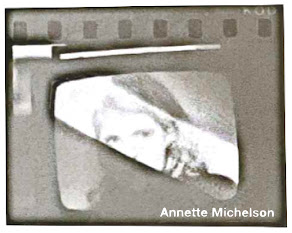The Critical Divergence Of Annette Michelson and Jill Johnston
After perusing the statements of art critics within Les Levine’s 1966 Critic, I was intrigued by those of Annette Michelson and Jill Johnston. Firstly, because they are women and secondly, because of each communication style. In my opinion, as a reader, neither expresses their ideas clearly enough. Perhaps that is due to the nature of transcripts. However, when approaching it as a text, I felt myself confused and doubling back on sentences, often finding that I did not grasp what they were trying to convey. Annette Michelson has a more academic tone; her writing is concise at times, but also has sentences that are raw streams of consciousness; rambling and getting lost along the way. Nonetheless, she clearly is speaking to an audience for a reason – she compares and contrasts art cultures of different times and places, while discussing the bounds of criticism as almost an art itself. Jill Johnston approaches criticism with a more casual and cynical tone. She swears, jokes, and is overall quite cavalier. However, along with the approachable nature to her work, she speaks in jargon and metaphor that may not be understandable to many. She does not seem to need the audience to fully comprehend her thoughts, it seems as if she speaks mainly for herself and those who will already understand. Johnston expresses her opinions experimentally and outrageously, though I feel as though I need to dive more deeply into her reservoir of Avant-guard queer criticism for context if I am to understand. With just a simple Google search the contrast in ideology and preference is clear for these two prominent Avant-guard female critics and it is evident in these pieces of writing. Annette focused on the academic and cultural facets of art, she sought to understand and communicate it. Jill wrote for a cause, to bring feminist, lesbian, and otherwise new and different perspectives to the table of art criticism during this time. In many ways these critics are similar, but also in many fundamental ways they are different and have created bodies of work that give unique perspectives to the world.




I enjoy the transparency in your blog, the honest truth of not completely understanding a piece of work is something that is hard for me to admit. I often fake it till I make it in most cases so I do not look like a fool. However, admitting this confusion there are usually others that also do not understand or hope to decipher the text. The style of each critic is different and shows the comparison. Do you think that the short transcripts we are privy to are enough to judge their writing styles and or biases?
ReplyDelete